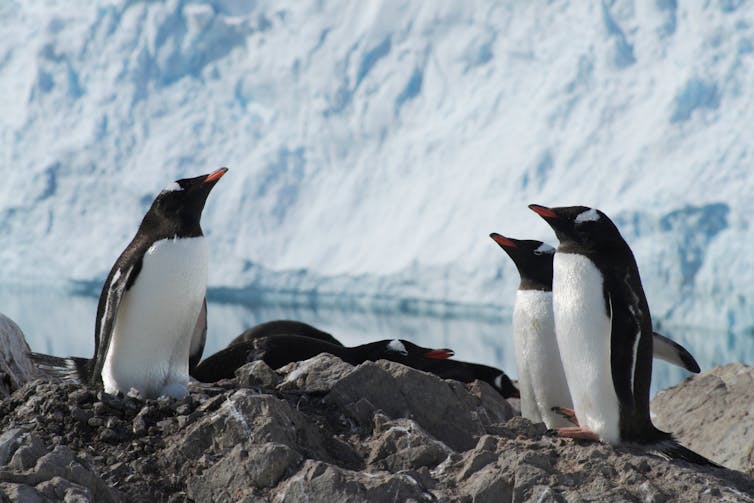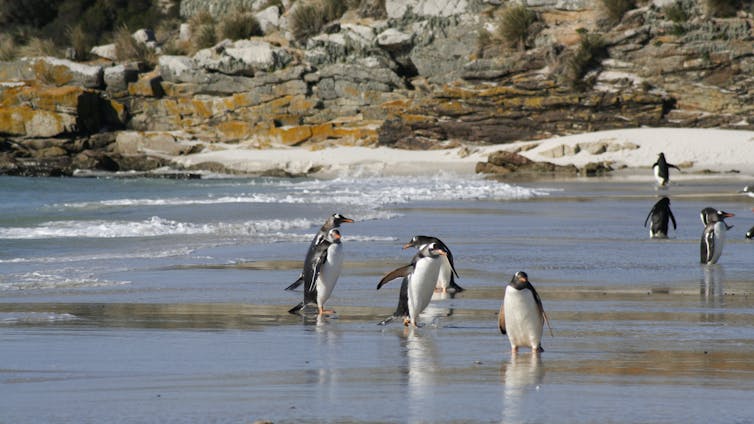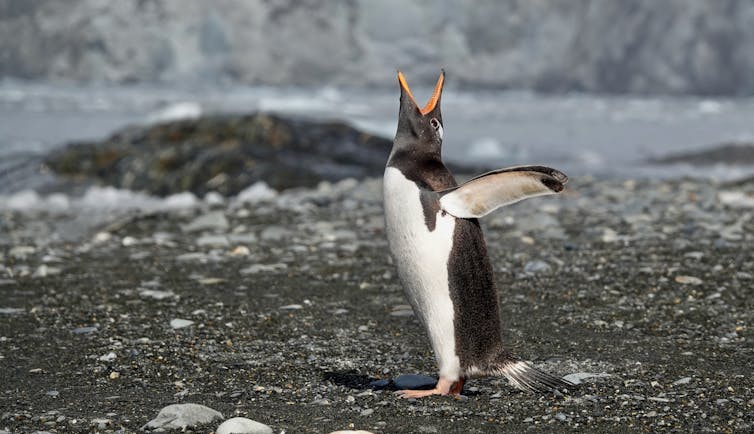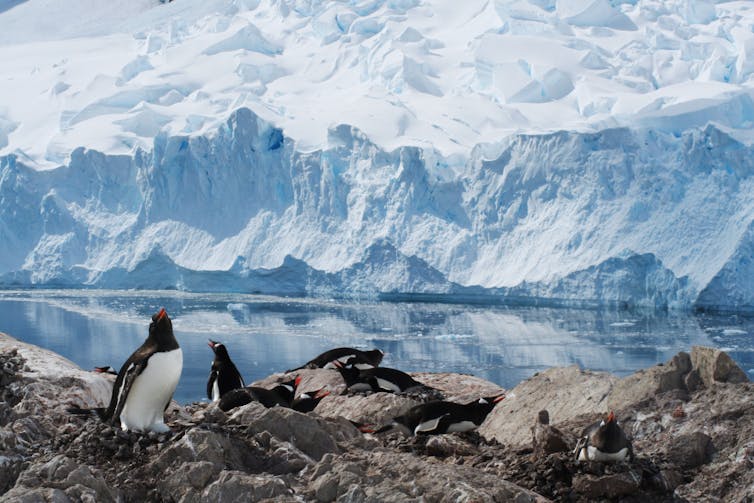When you think of scientists discovering new species, you might imagine searching the Amazon rainforest for new types of insect or the depths of the ocean for undiscovered crustaceans. But these days most new species we discover are found hiding in plain sight.
Such “hidden” species can look so similar to their relatives that they aren’t obviously a different species, yet are revealed as such based on differences in their DNA. These discoveries are made not by travelling the globe but in molecular genetics labs.
Thanks to a new abundance of genetic data, science is in the midst of a second wave of biodiversity discovery. In the past ten years, scientists have discovered new species of giraffes, dolphins, birds, and orangutans. And now my colleagues and I have identified three new species of penguins.

Following analysis of the DNA and morphology (shape) of the gentoo penguin, we’ve found that it’s not one species as previously thought but rather four independent species. This brings the total number of penguin species to 21, up from 18, and along with it the potential for further discoveries.
In our study of gentoo penguins, we analysed genetic differences among colonies across the Southern Ocean, including from the Falkland Islands, South Georgia Island, the Antarctic Peninsula, and Kerguelen Island. We were surprised to find that gentoo penguins from these four regions do not interbreed with each other and have become genetically distinct, to the point that an individual penguin’s origin can be identified by its DNA alone.
We didn’t expect this because other species of penguin, like the larger king penguin that overlaps in range with the gentoo, are known to interbreed between colonies separated by as much as 7,500km of open ocean. In fact, the degree of genetic divergence between the four gentoo penguin colonies is so great that we should consider them to be evolving independently of each other.

The four groups of penguins look superficially very similar. But when we measured their skulls, bills, flippers, and legs we found that they were significantly different in size, with those living on the Antarctic Peninsula being smallest and those on the Falkland Islands largest.
These physical and genetic differences are great enough that the former gentoo penguin (Pygoscelis papua) is now recognised as four distinct species: P. papua from the Falkland Islands, P. ellsworthi from the Antarctic Peninsula, P. poncetii from South Georgia, and P. taeniata from Kerguelen Island.
The four species inhabit distinct environmental conditions across a large range of latitudes. P. ellsworthi lives on the cold, icy Antarctic Peninsula at a latitude of around 65° south, in stark contrast to the milder conditions experienced by P. taeniata at 49° south. The four species also consume different diets, with the more southerly species eating more krill and fewer fish.

Now we need to understand how the four species have adapted to their distinct habitats and how they are likely to respond to environmental changes in the future.
The division of gentoo penguins has important implications for conservation. Gentoo penguins are listed as of “least concern” on the International Union for Conservation of Nature Red List of Threatened Species. The total number of gentoo penguins has increased over the past decade and the gentoo was thought to be the penguin species that may benefit most from climate change, even expanding its territory southward.
But this growth in numbers is predominantly within the new species P. ellsworthi on the Antarctic Peninsula. Population assessments have not been done for South Georgia or Kerguelen Island since the 1980s. As such, the conservation statuses of the new species P. poncetii and P. taeniata are unknown.

Given their location on isolated islands far north of the Antarctic Peninsula, they are almost certainly experiencing different effects of climate change than the prosperous P. ellsworthi. The conservation status of all four species must be urgently assessed given ongoing environmental change across the Southern Ocean.
Extinctions from climate change and habitat loss are happening at a truly alarming pace. The discovery of three new species of penguin, arguably one of the most beloved animals on Earth, highlights how little we still understand about the amazing diversity of life on this planet.
We must continue to seek out new species to have the best chance of preserving biodiversity for future generations. Without these efforts, we face losing species that we never knew existed.![]()
Jane Younger, Research Fellow, Department of Biology & Biochemistry, University of Bath
This article is republished from The Conversation under a Creative Commons license. Read the original article.
